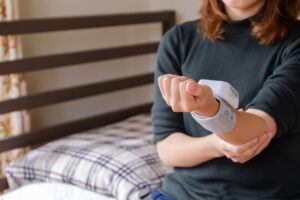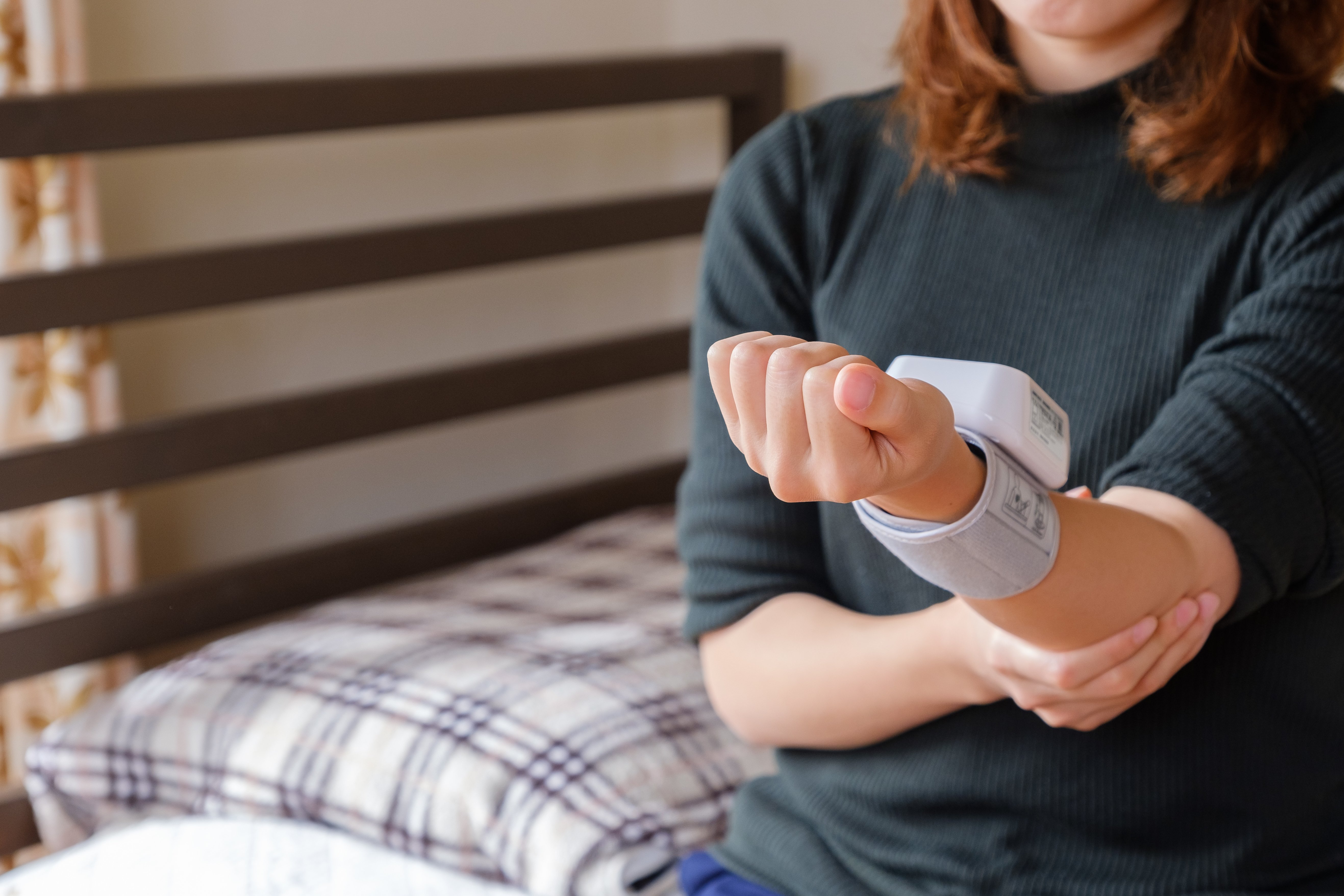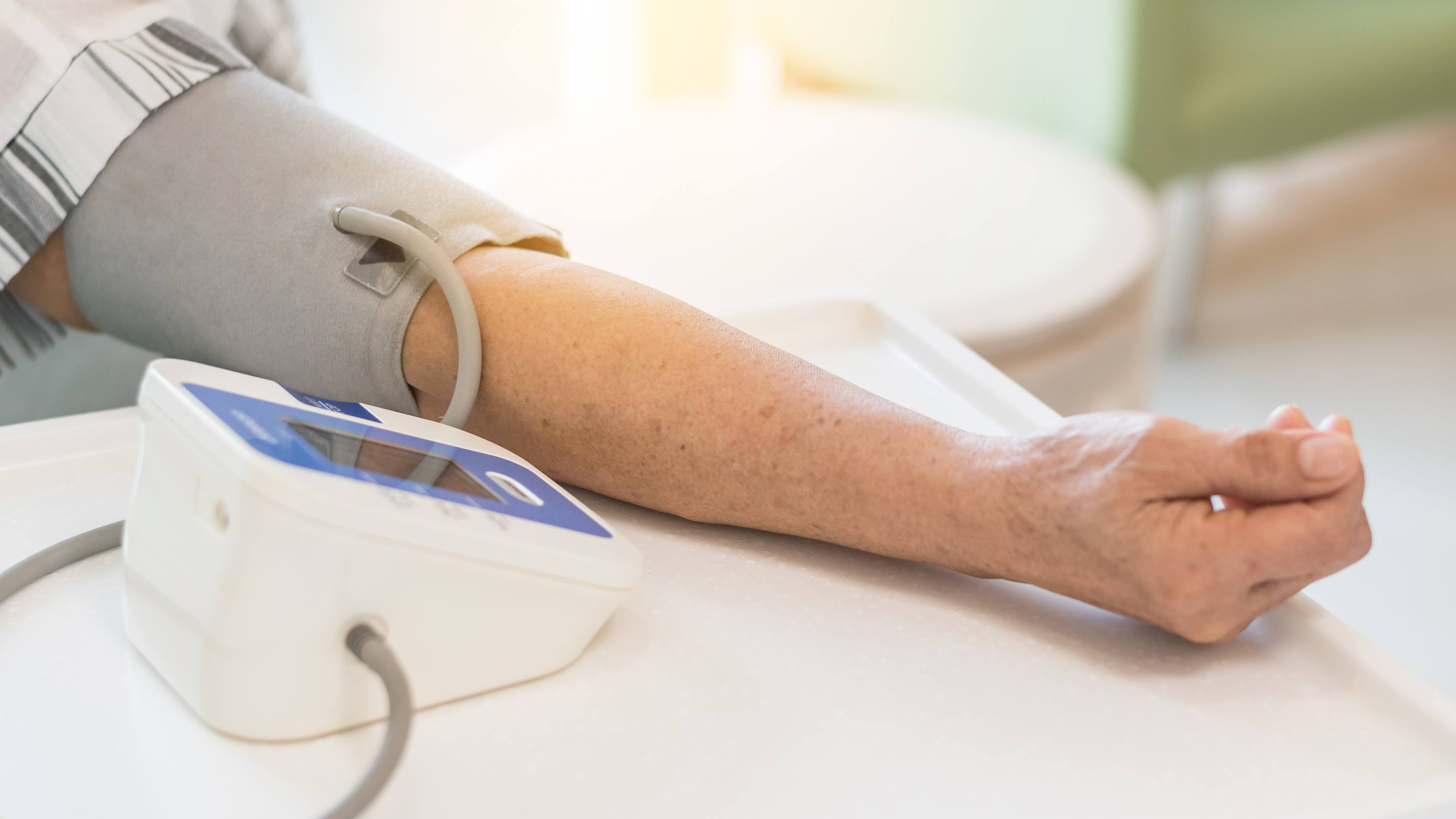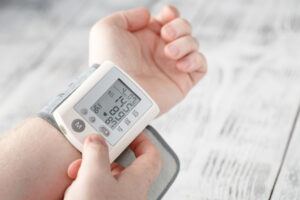
So you are ready to take charge of your health and want to know which blood pressure monitor is the best. Not all blood pressure monitor are equal. In the medical community some are more accurate than others.
However, you must know some of the ones that are most accessible, like the wrist and finger models, are not recommended by the medical experts.
You will never find a wrist or finger model blood pressure monitor in a doctor’s office or in hospital.
For some individuals, these are the only way that can fit. People with extra large arms usually seek out the wrist or finger model. The cuffs just don’t fill .
All in all, it is important that you know how these devices work
Blood pressure (BP) measuring devices have various features that make them unique and apt for everyday use. To choose a personalized BP device, it will be wise for you to pick the most accurate model for your unique circumstance or situation.
There is no clear-cut recommendation from health professionals as to which brand device is superior for home use. It will depend on your preference, and the process should feel like “choosing your own pair of shoes.” Simply, know what you’re looking for, and choose a device that fits you best.
However, as you are shopping for a blood pressure monitor for your personalized use, keep in mind that the upper arm blood pressure monitors are the most accurate. The American Heart Association does not recommend wrist or finger models.
Why Measure Blood Pressure at Home?
- Better control over your blood pressure
- Easy access to equipment and more affordable
- Closer monitoring and of blood pressure medication
- Track reversal or progression of blood pressure
- Avoid “white coat hypertension”
- Reduce the cost of healthcare
4 Types of BP Monitors You Can Use at Home
Upper Arm Models
- A majority of home-use blood pressure monitors are from this type, otherwise called the upper-arm cuff type. This model may be harder to put on if you’re doing it without assistance. But it’s generally easier to keep the cuff at the level of the heart for accurate BP determination.
- Upper arm models typically have a large, easy to read monitor or display.
- The patented features of the model make it more accurate than other portable BP home devices.
- Most brands work electronically, with or without the internet. Although certain brands won’t work without an internet connection.
- May be battery-operated or can come with an AC adapter for powering the device alternatively.
- The equipment comes with handy built-in storage.
How it works
- The device works on the principle of oscillation, where blood flowing through a blood vessel (an artery) between two pressures, called the systolic and diastolic pressures, cause vibrations in the blood vessel walls. These vibrations are detected and converted into electrical signals which produce a digital reading.
- Apart from measuring blood pressure, the device may alert the user of irregular heartbeats.
- May have the feature of storing BP readings for multiple users.
- Certain brands will automatically display the average of your recent measurements taken, as well as transmit your results to a mobile or computer application for free. This feature allows you to check your stats against the normal, and compare your figures over time.
Ease of Use
- Typically comes with a user-friendly interface and a large digital display for easy reading.
- It can be challenging to put the cuff single-handed or without assistance. After that is done, this equipment should be rather easy to use, in comparison with how a manual BP apparatus works. All you need to do is press the start button, and the device will get to work.
- Typically delivers a reading in 60-seconds or less.
Calibration
- Although most brands have been calibrated, it is recommended that you bring with you your newly acquired device during your check-up. Your doctor can help you check your blood pressure with a calibrated equipment, then with the upper arm device, you have bought. Your doctor will be able to teach you the correct positioning, as well as check the accuracy of your machine.
- To further ensure accuracy, you can consider calibrating your device. Follow the simple steps in the National Health and Nutrition Examination Survey (NHANES) Health Tech or Blood Pressure Procedures Manual. This is accessible online at cdc.gov/nchs/data/nhanes/nhanes_09_10/bp.pdf
Validation
For best assurance that your upper arm model is accurate, reliable, and consistent, you need to check that your device has undergone clinical validation. Look for a product certification that:
- Independent organizations or third parties have tested the equipment.
- The stringent requirements set by international organizations such as the Association for the Advancement of Medical instrumentation Standard (AAMI), the European Society of Hypertension (ESH), or the British Hypertension Society (BHS) have been met.
- For BP devices sold in the US, standards set by the Food and Drug Administration (FDA) should have been met.
- The International Organization for Standardization (ISO) protocols for validation should have been met.
Reliability
Since the most precise type of external BP measuring device is the kind that measures from your upper arm, the upper arm cuff models are reasonably accurate.
- Results are reliable as long as you can keep the cuff at the level of the heart when measuring blood pressure.
- This type of device has been recommended by the Heart Foundation for home use.
- The upper arm model is considerably more precise than other competing home-use models.
Size Options
- Typically comes with adjustable upper arm cuffs that should fit a wide range of arm sizes.
- If you happen to lift weights or have big arms, you may need to measure your arms before deciding to buy. If your arm is larger than 16 inches in circumference, you probably won’t fit into a standard upper arm model cuff. You may want to explore brands or alternatives that provide various cuff sizes.
Portability
Most brands are lightweight and easy-to-carry. Although, upper arm models are generally bulkier than the wrist cuff models.
Cost
For more precise readings, you may want to invest in a mid-range price of upper arm model with more sensitive electronic features. These typically cost $25-$60, or higher for units with advanced features.
The Wrist Model
- If you’re looking for convenience and comfort, there are several good quality wrist models, also known as “wrist cuff,” that can fit you.
- This model generally features an intuitive interface display that is user-friendly, and a click-button operation to start or stop.
- It is also easy to store as the cuff can be folded neatly in a handy storage box or container. However, wrist models are extremely sensitive to changes in body position.
How it works
- Similar to the upper arm device, this model works by the oscillatory method. The device’s cuff wraps around your wrist and inflates automatically when taking a reading.
- Can work as a heart monitor, warning you of irregular heartbeats
- Most brands have a built-in memory function that saves your measurements so you can monitor your health status, and see your progress with changes in lifestyle.
- To get an accurate BP reading, your wrist and arm must be at your heart’s level while the machine is measuring your blood pressure. Even then, some critics claim that the BP readings taken at the wrist are higher or less accurate than when the blood pressure is measured at the upper arm. One reason for inconsistencies may be the fact that the blood vessels (the arteries) of the wrist are narrower or not as deep in comparison with those of the upper arms.
Ease of use
- Large screen display for easy reading of BP and heart rate results
- Can easily be used while you’re on-the-go
- Wrist models are generally easier to put on (similar to the watch wearable model) without help.
- Users of the equipment had tendencies to get inaccurate results because they had a hard time keeping their wrist (and arms) at the correct required height—at the level of the heart.
- Fast and easy to use
- Typically delivers a reading in a minute or two.
Calibration
- The wrist model needs to be calibrated to give you the most accurate results. Most brands would be calibrated before being sold. But, it may still be a smart idea to bring your equipment to your doctor for comparison against a calibrated device to ensure its accuracy.
- Also, read through the product manual that comes with the equipment. You may need to calibrate your home device every one or two years, depending on the recommended manufacturer’s instructions.
Validation
For best assurance that your wrist model is accurate, reliable, and consistent, look for product certification or validation. Validation means the equipment has passed the stringent standards set by the AAMI/ESH/ISO, and the FDA for gadgets sold in the US.
Reliability
- Blood pressure measured on the wrist is less accurate than a BP reading taken from the upper arm. If you measure your BP with a wrist model, you need to ensure that you keep your wrist and arm at the level of your heart when the machine starts to work.
- The wrist model is not recommended by the American Heart Association (AHA) and the Heart foundation because it is considered less accurate than upper arm models.
Size Options
- Wrist models commonly come in a fits-all size that is usually smaller (and more portable) than upper arm cuffs.
- A few brands include adjustable cuffs that can accommodate the average wrist sizes (5.5-8.5 inches of wrist circumference).
Portability
- Come in portable sizes that you can take with you nearly anywhere
- The small, lightweight design makes it convenient to use while commuting, at work, or at the gym.
Cost
- You can buy a good quality wrist device for $30 or higher.
Wearable Blood Pressure Monitor (Fitness Watch Models)
The technology of the wearable watch model is rather impressive. It calculates blood pressure readings with the use of sensors that analyze the bloodstream of the user. Similar sensors are used to monitor the heart rate. These optical or light sensors (typically with a source and a receiver) monitor blood pressure through the radial artery found on your wrist.
How it works
- To check your blood pressure, you simply need to place your finger on a sensor. For some brands, you’ll press a button while holding the watch device against your chest, so your heartbeat is detected.
- The sensor inside the watch detects the pulse on your wrist. The difference between the two—called the pulse transmit time (PTT) is then used by the device to compute your BP reading.
- Some watch models can determine whether you have the risk, or are developing heart problems now or in the future. For most devices, you’ll see an indicator such as a green circle when your BP is within normal. Otherwise, it may display a red circle (or a warning) for abnormal BP or pulse activity.
- For certain brands, results can be synced to an accompanying mobile or computer application.
Ease of Use
- The device is user-friendly and more comfortable than the traditional cuff.
- Taking blood pressure readings is easy. After pressing the start button or placing your finger on a sensor, it will only take a minute or two to display the result.
- Generally, the device is quiet and discreet. You’ll be able to check your BP while taking a break at work, or even in a public place without calling much attention.
Calibration
Most brands would be calibrated before being sold. But, bringing your equipment to your doctor for calibration before using it at home is recommended. To further ensure accuracy, follow the simple instructions found in the National Health and Nutrition Examination Survey (NHANES) Health Tech or Blood Pressure Procedures Manual. This can be accessed at cdc.gov/nchs/data/nhanes/nhanes_09_10/bp.pdf
Validation
- There are brands being sold that have not undergone validation by a third party. These watch models may not provide accurate measurements that are needed for individuals with high or low blood pressure problems.
- Check for proper validation from reputable international organizations (AAMI/ESH/ISO/FDA) to ensure quality and accuracy before purchasing the product.
Reliability
Manufacturers claim that their high-quality watch models are reasonably accurate in measuring blood pressure, as long as users strictly comply with the instructions provided in the product manual.
Size Options
Most brands have small, medium, and large sizes available that could accommodate various wrist sizes.
Portability
Although there are variations depending on the brand, most wearable BP monitors are lightweight, slim, and portable like regular watches.
Cost
The average cost can range from $40-$500, or even higher for models with unique functions. These may include additional sensors, a slimmer form, and other exceptional features such as tracking your number of steps, traveled distance, sleeping patterns, and calories burned.
Finger Blood Pressure Monitors
- Finger blood pressure monitors are the simplest to use of all home models, especially when you are taking blood pressure readings by yourself. You no longer have to roll-up your sleeves, or know how to use bulbs, gauges, and bulky arm cuffs.
- One downside is that this model is susceptible to temperature and position changes in comparison with the previous types discussed. This may be the reason why the model’s popularity has faded.
- Generally accepted by children because it is less intimidating
How it works
- Simply insert your index finger and adjust the positioning slide for a snug fit, then press the start button. The device will start to do its work by making the finger cuff inflate. Your blood pressure (systolic and diastolic) will be calculated and displayed in a large digital display. The device will also show your heart rate.
- Most finger blood pressure monitors operate on batteries.
- You should read the product manual carefully. Most brands would not recommend checking your blood pressure with cold hands or fingers, or within short intervals. Keeping it steady on the right spot is essential. You may be required to wash your hands before inserting your finger into the device’s finger cuff.
Ease of use
- The equipment commonly has a pulse meter, built-in memory, memory recall, and auto-off functions.
- With large digital display making results easy to read
- An alternative for individuals with large arms that cannot fit the arm/wrist cuff models
- Very simple and effortless to use: insert your finger, hit the start button, then get results quickly
- Some users have complained of a consistent beeping sound when the device measures blood pressure.
Calibration
As with the other models, it is best to back up your results using this device with regular visits to your physician’s office. Importantly, have your equipment calibrated or checked for accuracy at least once a year. Following the simple instructions found in the National Health and Nutrition Examination Survey (NHANES) Health Tech or Blood Pressure Procedures Manual should be helpful. The manual can be accessed at cdc.gov/nchs/data/nhanes/nhanes_09_10/bp.pdf
Validation
As with the other models, you need to ensure that the equipment you buy has been tested and approved by the FDA in the US, or by other reliable testing organizations in your country. Clinical validation from international institutions such as AAMI/ESH/ISO should ensure that the product you’re buying has been approved for quality and accuracy.
Reliability
- Not as precise as the upper arm model. Some scientists claim that its accuracy could be improved by taking multiple blood pressure measurements over time.
- The model is not recommended by several medical professionals because these have been found to yield less reliable results in comparison with other home models.
- The inconsistency of results has led users to repeat measurements, and average the results.
Size options
- Comes in a standard size that should fit multiple finger sizes
- If your fingers are very small (less than 2 inches in diameter), it might be difficult for you to make the finger cuff fit tightly.
- Users claim that the device worked better for individuals with thick fingers that fitted snugly into the finger cuff than those with smaller fingers.
Portability
- Small, easy-to-grab and use anytime
- Portable and effortless to use even without a manual
Cost
This is relatively more affordable with an average price range of $5 to $50 per unit.
Choosing the Right Fit BP Monitor
With the rise in the incidence of heart-related disorders such as high blood pressure and stroke, monitoring your blood pressure at home may be a beneficial investment. Measuring blood pressure can be tricky because it changes at different times of the day, and in response to various physical and emotional events. Hence, choosing a quality blood pressure home device is critical.
Selecting a model that fits your right is now easy to do with a variety of good quality home devices. These are readily available from your local pharmacy, medical supplies vendor, or online. What’s important is that you choose equipment that’s accurate, easy-to-use, and fits your budget–as well as your arm or wrist. Moreover, you need to be a wise buyer and only choose equipment that has been properly calibrated and validated.


